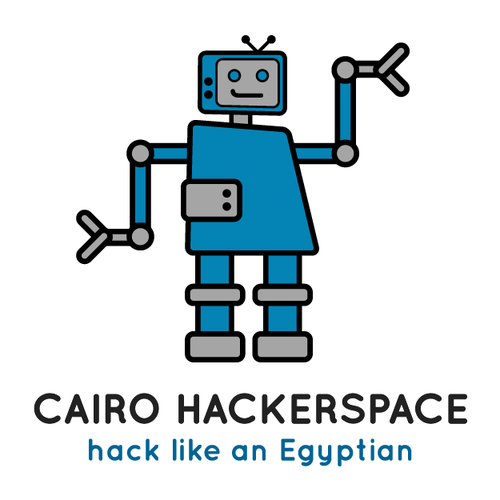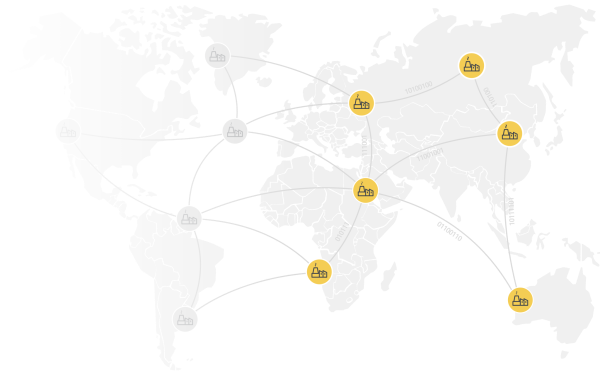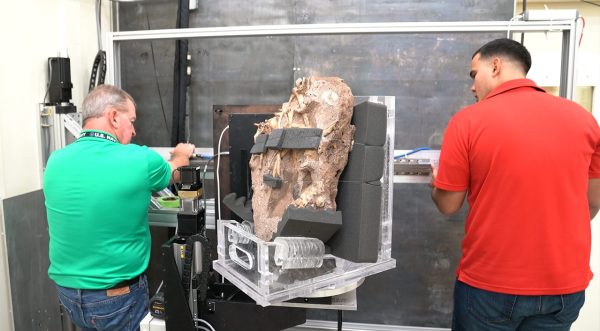Thanks a lot, Elon. Or maybe not, depending on how this report that China used Starlink signals to detect low-observable targets pans out. There aren’t a lot of details, and we couldn’t find anything approximating a primary source, but it seems like the idea is based on forward scatter, which is when waves striking an object are deflected only a little bit. The test setup for this experiment was a ground-based receiver listening to the downlink signal from a Starlink satellite while a DJI Phantom 4 Pro drone was flown into the signal path. The drone was chosen because nobody had a spare F-22 or F-35 lying around, and its radar cross-section is about that of one of these stealth fighters. They claim that this passive detection method was able to make out details about the drone, but as with most reporting these days, this needs to be taken with an ample pinch of salt. Still, it’s an interesting development that may change things up in the stealth superiority field.
makerspace31 Articles
Internet Of Production Alliance Wants You To Think Globally, Make Locally
With the proliferation of digital fabrication tools, many feel the future of manufacturing is distributed. It would certainly be welcome after the pandemic-induced supply chain kerfuffles from toilet paper to Raspberry Pis. The Internet of Production Alliance (IoP) is designing standards to smooth this transition. [via Solarpunk Presents]
IoP was founded in 2016 to build the infrastructure necessary to move toward a global supply chain based on local production of goods from a global database of designs instead of the current centralized model of production with closed designs. Some might identify this decentralization as part of the Fourth Industrial Revolution. They currently have developed two standards, Open Know-Where [PDF] and Open Know-How.
Open Know-Where is designed to help locate makerspaces, FabLabs, and other spaces with the tools and materials necessary to build a thing. The sort of data collected here is broken down in to five categories: manufacturing facility, people, location, equipment, and materials. Continue reading “Internet Of Production Alliance Wants You To Think Globally, Make Locally”
Hackaday Links: July 2, 2023
Members of Pixelbar woke up to shocking news on Wednesday morning this week as they learned that a fire had destroyed the building housing their Rotterdam hackerspace. Pictures of the fire are pretty dramatic and show the entire building ablaze. We’re not familiar with Pixelbar specifically, but most hackerspaces seem to share space with other businesses in repurposed warehouses and other industrial buildings, and it looks like that was the case here. Local coverage doesn’t indicate that a cause has been determined, but they do say that “large batches of wood” were stored in or near the structure, which likely contributed to the dramatic display. There don’t seem to be reports of injuries to civilians or first responders, so that’s a blessing, but Pixelbar seems to have been completely destroyed. If you’re in a position to help, check out their GoFundMe page. As our own Jenny List, who currently lives in The Netherlands, points out, spaces suitable for housing a hackerspace are hard to come by in a city like Rotterdam, which is the busiest port in Europe. That means Pixelbar members will be competing for space with businesses that have far deeper pockets, so anything you can donate will likely go a long way toward rebuilding.
Hiring From A Makerspace Pays Off
A makerspace is a great place to use specialty tools that may be too expensive or large to own by oneself, but there are other perks that come with participation in that particular community. For example, all of the skills you’ve gained by using all that fancy equipment may make you employable in some very niche situations. [lukeiamyourfather] from the Dallas Makerspace recently found himself in just that situation, and was asked to image a two-million-year-old fossil.
The fossil was being placed into a CT machine for imaging, but was too thick to properly view. These things tend to be fragile, so he spent some time laser cutting an acrylic stand in order to image the fossil vertically instead of horizontally. Everything that wasn’t fossil had to be non-conductive for the CT machine, so lots of fishing line and foam was used as well. After the imaging was done, he was also asked to 3D print a model for a display in the museum.
This is all going on at the Perot Museum of Nature and Science if you happen to be in the Dallas area. It’s interesting to see these skills put to use out in the wild as well, especially for something as rare and fragile as studying an old fossil. Also, if you’d like to see if your local makerspace measures up to the Dallas makerspace, we featured a tour of it back in 2014, although they have probably made some updates since then.
Hackaday Links: November 3, 2019
Depending on how you look at it, the Internet turned 50 years old last week. On October 29, 1969, the first message was transmitted between two of the four nodes that made up ARPANET, the Internet’s predecessor network. ARPANET was created after a million dollars earmarked for ballistic missile defense was diverted from the Advanced Research Projects Agency budget to research packet-switched networks. It’s said that ARPANET was designed to survive a nuclear war; there’s plenty of debate about whether that was a specific design goal, but if it was, it certainly didn’t look promising out of the gate, since the system crashed after only two characters of the first message were sent. So happy birthday, Internet, and congratulations: you’re now old enough to start getting junk mail from the AARP.
Good news for space nerds: NASA has persuaded Boeing to livestream an upcoming Starliner test. This won’t be a launch per se, but a test of the pad abort system intended to get astronauts out of harm’s way in the event of a launch emergency. The whole test will only last about 90 seconds and never reach more than 1.5 kilometers above the White Sands Missile Range test site, but it’s probably a wise move for Boeing to be as transparent as possible at this point in their history. The test is scheduled for 9:00 AM Eastern time — don’t forget Daylight Savings Time ends this weekend in most of the US — and will air on NASA Television.
Speaking of space, here’s yet another crowd-sourced effort you might want to consider getting in on if you’re of an astronomical bent. The Habitable Exoplanet Hunting Project is looking for a new home for humanity, and they need more eyes on the skies to do it. An introductory video explains all about it; we have to admit being surprised to learn that the sensitive measurements needed to see exoplanets transiting their stars are possible for amateur astronomers, but it seems doable with relatively modest equipment. Such are the advances in optics, CCD cameras, and image processing software, it seems. The project is looking for exoplanets within 100 light-years of Earth, perhaps on the hope that a generation ship will have somewhere to go to someday.
 Space may be hard, but it’s nothing compared to running a hackerspace right here on Earth. Or at least it seems that way at times, especially when those times include your building collapsing, a police raid, and being forced to operate out of a van for months while searching for a new home, all tragedies that have befallen the Cairo Hackerspace over the last few years. They’re finally back on their feet, though, to the point where they’re ready to host Egypt’s first robotics meetup this month. If you’re in the area, stop by and perhaps consider showing off a build or even giving a talk. This group knows a thing or two about persistence, and they’ve undoubtedly got the coolest hackerspace logo in the world.
Space may be hard, but it’s nothing compared to running a hackerspace right here on Earth. Or at least it seems that way at times, especially when those times include your building collapsing, a police raid, and being forced to operate out of a van for months while searching for a new home, all tragedies that have befallen the Cairo Hackerspace over the last few years. They’re finally back on their feet, though, to the point where they’re ready to host Egypt’s first robotics meetup this month. If you’re in the area, stop by and perhaps consider showing off a build or even giving a talk. This group knows a thing or two about persistence, and they’ve undoubtedly got the coolest hackerspace logo in the world.
And finally, no matter how bad your job may be, it’s probably not as bad as restoring truck batteries by hand. Alert reader [rasz_pl] tipped us off to this video, which shows an open-air shop in Pakistan doing the dirty but profitable work of gutting batteries and refurbishing them. The entire process is an environmental and safety nightmare, with used electrolyte tossed into the gutter, molten lead being slung around by the bucketful, and not a pair of safety glasses or steel-toed shoes (or any-toed, for that matter) to be seen. But the hacks are pretty cool, like pouring new lead tabs onto the plates, or using a bank of batteries to heat an electrode for welding the plates together. We’ve talked about the recyclability of lead-acid batteries before and how automated plants can achieve nearly 100% reuse; there’s nothing automated here, though, and the process is so labor-intensive that only three batteries can be refurbished a day. It’s still fascinating to watch.
Friday Hack Chat: Making A Makerspace
How do you make a makerspace? Over the last decade, there have been plenty of talks and tutorials handing out pointers. No day of the week will be good for a meeting, so the meetings are always on Tuesdays. The bike shed will be painted orange, no exceptions. Are you going to be a for-profit, or not-for-profit? Are we a makerspace or a hackerspace? Jerry, stop being clever. Pantone 021 U.
 For this week’s Hack chat, we’re going to be talking all about making a makerspace. These are community hubs where people come together and share resources to bring their inventions to life. It’s not as simple as it may seem. You need insurance, you need a building, you need a landlord who’s cool, and there are a thousand and one things that can go wrong. Who best to steer you through the storm of opening a Hackerspace? Who can you solicit advice from?
For this week’s Hack chat, we’re going to be talking all about making a makerspace. These are community hubs where people come together and share resources to bring their inventions to life. It’s not as simple as it may seem. You need insurance, you need a building, you need a landlord who’s cool, and there are a thousand and one things that can go wrong. Who best to steer you through the storm of opening a Hackerspace? Who can you solicit advice from?
Our guests for this week’s Hack Chat are Vaibhav Chhabra, a mech E from Boston University. He spent two years working on an eye diagnostic device, is an instructor at MIT REDX health care innovation lab, and is a founder of the incredible Makers Asylum. Eric Michaud is a Hacker, runner, and author, currently working on Rift Recon, Shellcon, and hackerspaces.org. He has written tutorials on Adafruit, and was a founding member of HacDC before he took off to Chicago and started PS:One.
Topics for this week’s Hack Chat include what it takes to open a makerspace, how you can fund it, organizational structure concerning for-profit, not-for-profit, and the thing that the members are most concerned about: what equipment is most crucial for a successful makerspace. You are, of course, encouraged to add your own questions to the Hack Chat; to do that, just leave a comment on the Hack Chat event page.
Our Hack Chats are live community events on the Hackaday.io Hack Chat group messaging. This Hack Chat is going down Friday, February 16th at 09:30am Pacific time. This is different than our usual time slot. Want to know what time this is happening in your neck of the woods? Here, look at the neat time zone converter thingy
Click that speech bubble to the right, and you’ll be taken directly to the Hack Chat group on Hackaday.io.
You don’t have to wait until Friday; join whenever you want and you can see what the community is talking about.
Brits: Make A Vote, Put Cash A Hackerspace’s Way
Those of you who have been involved in the running of a hackerspace or makerspace will know the never-ending struggle to maintain financial solvency, and the quest for sources of income to move your organisation forward. It’s certainly a topic upon which Hackaday’s crew have some experience, more than one of us has helped run a space.
A good avenue to explore lies with community grants: money from organisations on a philanthropic basis to invest in community organisations. These can come from charities, governmental organisations, or even from companies as part of their corporate social responsibility. It’s this last source of grant money that claims our attention today, because we are in the final days of voting for the Aviva Community Fund, in which the British financial and insurance company makes grants for worthy causes across the country. The causes compete to gain as much support as they can, and hope to thus win their prize.
Among the many worthy recipients of the cash are a selection of hackerspaces. First up are Hitchin Hackspace, whose Big Hak full-size rendition of a Milton Bradley Big Trak toy was featured in our coverage of EMF Camp 2016. They are building a new space in what we’ll call a redundant community facility because it sounds better than “Former public toilet”, and winning a grant will help them a lot in that aim.
Then we have East London Makerspace. They have secured an unused garage to turn into a makerspace, as the capital’s population of our community swells to support ever more spaces in its different suburbs. Like Hitchin, the money would go to the essential work involved in creating a functioning space where previously there was nothing.
Finally, we have the unexpected, a heating system from Milton Keynes Men In Sheds. If you know about Men In Sheds as a community organisation for older people, you’ll be wondering why this is listed here. What we haven’t told you is that MK Makerspace is a subgroup of the MK Shed that occupies the upstairs portion of their building, and what warms the Shedders also warms the hacker community of one of Britain’s new towns.
These appear to be the only hackerspaces bidding for grant money, but votes can usefully be given to other allied causes. Linlithgow Remakery and Tool Library, for instance could use a boost, as could the other Men In Sheds groups scattered across the competition.
So if you are one of Hackaday’s British readers, please take a minute to stop by the voting pages listed above, and give them a boost. You have a couple of days to get your votes in, so make them count, and make a difference!
Disclosure: [Jenny List] is a member of Milton Keynes Makerspace.















